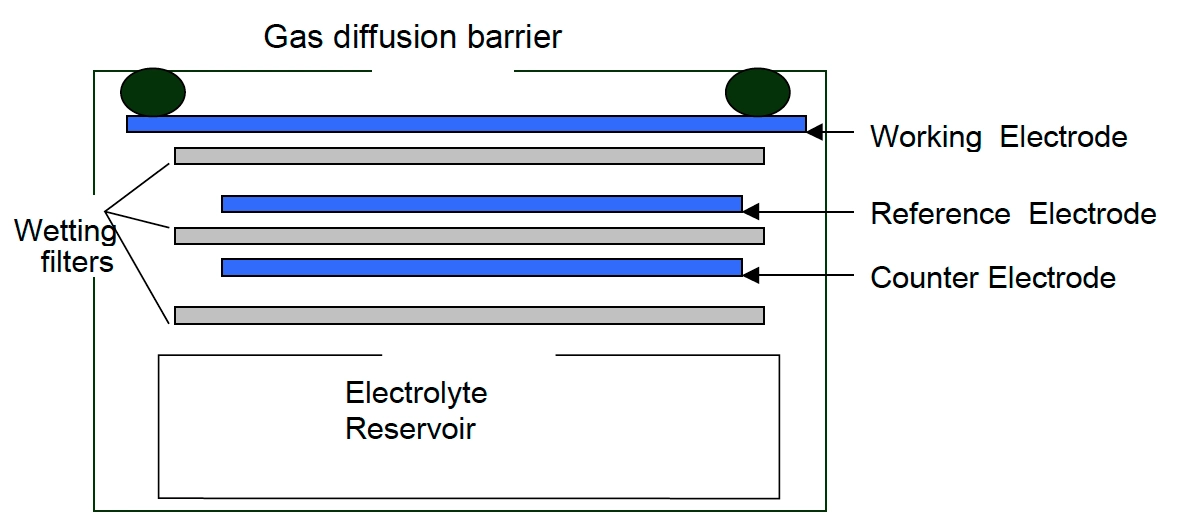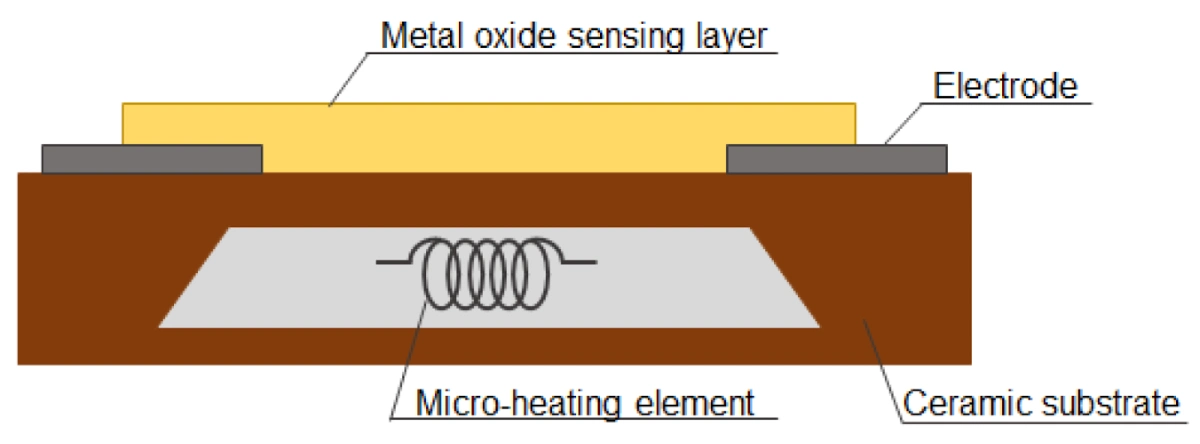Carbon dioxide (CO₂) is a naturally occurring gas that plays a crucial role in Earth’s atmosphere. It’s a key component of the carbon cycle, essential for photosynthesis in plants, and an important greenhouse gas that helps regulate the planet’s temperature. However, human activities like burning fossil fuels, deforestation, and industrial processes have dramatically increased CO₂ levels, leading to serious environmental challenges.
For environmental professionals, understanding CO₂ is essential for addressing climate challenges. Monitoring CO₂ levels is crucial for assessing the impact of mitigation strategies like renewable energy adoption, afforestation, and carbon capture technologies. This article provides detailed insights into carbon dioxide (CO₂), including its sources in ambient air, concentration levels, impacts on health and the environment, corrective actions, the importance of CO₂ monitoring, and the various technical methods used for CO₂ detection and measurement.
1. What is CO₂?
Let me clarify this with a simple chemical formula: One carbon atom and two oxygen atoms make up carbon dioxide, a chemical compound. The formula CO2 is often used to refer to it. Carbon dioxide is a colorless and non-flammable gas at normal temperature and pressure. Although much less abundant than nitrogen and oxygen in Earth’s atmosphere, carbon dioxide is an important constituent of our planet’s air.
Carbon dioxide is a significant greenhouse gas that helps to trap heat in our atmosphere. Without it, the earth would be unbearably cold. However, rising CO2 concentrations in the atmosphere are causing average global temperatures to rise, affecting other components of the Earth’s climate. Carbon dioxide is a gas that is both colorless and odourless. It is soluble in Water, ethanol, and acetone. CO2 is called carbon dioxide gas in a gas form, dry ice in a solid form, and an aqueous solution of CO2 is called soda water or carbonated water.
Carbon Dioxide in Atmosphere:
CO2 is a gas produced naturally by various biological and geological activities. Although carbon dioxide is frequently associated with pollution and the impacts of climate change, it also serves important functions for life on our planet due to its release from decaying organic matter and the combustion of fossil fuels.
However, when atmospheric CO2 levels rise due to human activities such as burning of fossil fuels and deforestation, it can result in extra carbon being released into the atmosphere, which traps heat. Such an increase in atmospheric carbon can lead to an increase in global temperature, causing what is known as global warming.
In short, it is critical to understand the significance of carbon dioxide and its global scale. Careful natural resource management and carbon emission reduction are critical to maintaining our planet’s carbon balance and assuring a sustainable future for all forms of life.
Did you know this? Carbon dioxide is the fourth most abundant component of dry air. Today, it has a concentration of over 400 ppm (parts per million) in the atmosphere. Before industrial activity, there was around 270 ppm in the atmosphere. Carbon dioxide levels in our atmosphere have thus risen about 40% since the start of the Industrial Revolution, raising global temperature.
2. Sources
Atmospheric carbon dioxide comes from both natural and man-made sources. Nature typically balances natural sources of carbon dioxide via the carbon cycle and carbon sinks, but human sources of outdoor carbon dioxide have upset this delicate balance. Common anthropogenic sources of atmospheric carbon dioxide are:
- Industrial processes, such as refineries, chemical manufacturing, and cement.
- Electricity generation, particularly in coal-fired power plants.
- Transportation, such as automobiles, trucks, and airplanes. Of All these CO2 sources, electric power generation emits the most anthropogenic CO2 into the atmosphere.
- Since the Industrial Revolution, human sources of carbon dioxide emissions have been growing. Human activities such as the burning of oil, coal, and gas, as well as deforestation, are the primary causes of the increased carbon dioxide concentrations in the atmosphere.
Myth: Carbon dioxide is only produced by human activities, mainly from burning fossil fuels.
Reality: Carbon dioxide comes from both natural and human-made sources, with natural sources being the largest contributors.
Were you aware of this? According to the EPA, in 2022, carbon dioxide (CO₂) made up about 80% of the total greenhouse gas (GHG) emissions in the U.S. caused by human activities. Burning fossil fuels contributed 74% of all GHG emissions and 93% of human-made CO₂ emissions in the country. Other human activities accounted for around 6% of total GHG emissions and 7% of CO₂ emissions.
“Want to know which industries produce the most CO₂ and how it impacts air quality? Read our blog to learn more.”
3. Levels of Carbon Dioxide
The levels of CO2 in the air can also have various potential health problems, depending on the ranges as follows:
The typical outdoor CO2 concentrations are approximately 380 ppm, although, in urban areas, these have been reported to be as high as 500 ppm because of the increased anthropogenic sources. (Persily, 1997).
| PPM | Potential Health Problem |
| 400 | average outdoor air level. |
| 400–1,000 | typical level found in occupied spaces with good air exchange. |
| 1,000–2,000 | level associated with complaints of drowsiness and poor air |
| 2,000–5,000 | level associated with headaches, sleepiness, and stagnant, stale, stuffy air. Poor concentration, loss of attention, increased heart rate and slight nausea may also be present. |
| 5,000 | this indicates unusual air conditions where high levels of other gases could also be present. Toxicity or oxygen deprivation could occur. This is the permissible exposure limit for daily workplace exposures. |
| 40,000 | this level is immediately harmful due to oxygen deprivation. |
The above table represents levels of CO2 in the air and potential health problems.
4. Health & Environmental Impact of Carbon Dioxide
Health Impact
Scientists used to believe that carbon dioxide was harmless at common indoor levels, but new findings indicate that this is not the case. From sluggish two o’clock meetings to poor sleep, elevated concentrations of indoor CO2 can directly impact our health and well-being in a number of ways.
- At normal levels, CO2 is harmless to humans and serves an important function in regulating blood pH, blood pressure, and breathing. However, high levels of CO2 can cause headaches, dizziness, muscle cramps, respiratory and circulatory issues, loss of consciousness, and, in extreme circumstances, death by asphyxiation.
- These effects result from oxygen depletion in the blood due to high carbon dioxide levels. It is, therefore, essential to balance the CO2 concentration in the atmosphere. At the same time, it is important to maintain an environment in which the balance of carbon, including solid, hot, pure, and compressed carbon, predominates for optimal functioning of the body.
Were you aware of this? Indoor carbon dioxide can also impact our decision-making and problem-solving skills. The Lawrence Berkeley National Laboratory uncovered a connection between carbon dioxide concentrations and cognitive and working ability.
Environmental Impact
Before humans started burning fossil fuels, naturally occurring greenhouse gases helped to make the Earth’s temperature habitable. Without them, the global average temperature would be below freezing. So, we know that even very low natural quantities of carbon dioxide and other greenhouse gases can have a significant impact on the Earth’s climate.
Carbon dioxide (CO₂) is a natural part of our atmosphere, essential for processes like photosynthesis. However, excessive CO₂ emissions, largely from human activities like burning fossil fuels, deforestation, and industrial processes, are disrupting the planet’s balance.
As a major greenhouse gas, CO₂ traps heat in the atmosphere, leading to global warming. This contributes to melting ice caps, rising sea levels, and extreme weather events such as heatwaves and storms. Beyond the climate, CO₂ also impacts ecosystems by altering ocean chemistry, causing acidification that threatens marine life, including coral reefs.
Did you know this: Despite its ubiquitous presence in our atmosphere, carbon dioxide has become a major environmental concern.
5. Possible Corrective Measures
Common air purifiers can’t easily remove CO₂ from the air. Most use HEPA and activated carbon filters, which trap particles, while activated carbon filters remove certain gases. However, neither can eliminate CO₂. To reduce CO₂ levels and limit exposure to this greenhouse gas, preventive measures are essential. Some effective steps are outlined below.
- Switch to Renewable Energy: Transitioning to solar, wind, and hydroelectric power reduces reliance on fossil fuels, cutting CO₂ emissions significantly.
- Reforestation and Afforestation: Planting trees helps absorb CO₂ naturally, restoring the balance in the carbon cycle.
- Energy Efficiency: Cutting CO₂ emissions by using energy-saving appliances, improving industrial processes, and reducing waste.
- Carbon Capture Technology: Innovative systems can capture CO₂ from the air or emissions sources, preventing it from entering the atmosphere.
- Sustainable Transportation: Adopting electric vehicles, public transport, and cycling reduces CO₂ emissions from traditional fuel-powered transportation.
6. Measurement Methods of CO2 Monitoring
Carbon dioxide is a colorless, odourless gas that we can’t sense on our own. To measure CO₂ in the air, sensors are used. Common methods for CO₂ monitoring include nondispersive infrared (NDIR), photo-acoustic, metal oxide semiconductors (MOS), and electrochemical sensors.
Nondispersive infrared absorption (NDIR) – Carbon dioxide absorbs infrared radiation at a particular frequency. When the gas sample is exposed to infrared radiation, the infrared radiation absorbed by the CO2 molecules present in the gas sample is measured by the detector in a non-dispersive photometer. However, using this principle in carbon dioxide monitors may result in potential interferences from other gases that absorb infrared radiation similar to CO2.
Photo-acoustic: Photo-acoustic sensors work on the same principle as NDIR sensors by using absorption of specific wavelengths of light. However, instead of measuring the light received by a detector like NDIR sensors, photo-acoustic sensors use a microphone to detect sound. When CO₂ molecules absorb infrared (IR) light, they vibrate and produce a faint “humming” sound, which the microphone picks up. The key advantage of this method is that it doesn’t require a clear line of sight, allowing these sensors to be much smaller in size; some are even less than 1 cm³.
Electrochemical – CO2 monitors working on the electrochemical principle are operated based on the diffusion of carbon dioxide gas into the sensor, which results in the production of an electrical signal proportional to the CO2 concentration. It allows accurate measurement of even low carbon dioxide concentrations, which is essential in carbon dioxide monitoring in ambient conditions.
Metal Oxide Semiconductors (MOS): The sensitive source of metal oxide semiconductor gas sensors is mainly made of semiconductor material. The most widely used semiconductor material is not the common silicon and germanium semiconductor, but metal oxide semiconductor. The basic working principle of metal oxide semiconductor gas sensor: under certain conditions (temperature), after carbon dioxide (CO2) in the air contacts with metal oxide semiconductor material, the chemical composition will be changed through reduction or oxidation reaction, and the process will be accompanied by electric charge. The transfer further causes the change in the resistance of the semiconductor, and the detection of the gas can be realized by measuring the change of the resistance of the semiconductor.
Source – https://www.mdpi.com/1424-8220/23/23/9548
7. Oizom’s Sensor Working Principle for CO2 monitoring
At Oizom. We offer Carbon dioxide (CO2) sensors for air quality monitoring. The Carbon Dioxide sensor module is designed to accurately measure low concentrations of CO2 at the ppm level in ambient air. This module is capable of real-time monitoring, ensuring precise and real-time data collection.
Its advanced support electronics make this air quality sensor both compact and reliable. Our CO2 sensor works on Non-Dispersive Infrared (NDIR) technology and offers long-term stability and reliable air quality data measurement. This makes it an ideal choice for indicative real-time air quality monitoring in outdoor environments.
This Oizom CO2 sensor undergoes calibration using standard gases and tools to ensure high sensitivity and accuracy. Each gas sensor is calibrated with zero and span checks in a controlled lab, following Section 12.2 of the USEPA Quality Assurance Handbook for Air Pollution Measurement Systems Volume II. Calibration is done using NIST-traceable gas standards for reliable performance.
This CO2 sensor module is integral to outdoor air quality monitoring systems like Polludrone, Pollusense, and AQBot. It is well-suited for applications such as smart city monitoring, greenhouse gas emission tracking, and research-based projects.
8. Why Choose Oizom CO2 Sensor?
- Compact: Our sensors are small and easy to install, perfect for use in any space, making them ideal for portable air quality monitoring. The CO₂ sensors come pre-calibrated and can be quickly replaced in just a few minutes by removing and replacing the old sensor with a new one.
- Durable: The CO₂ sensor has a long life of almost two years.
- Energy Efficient: There is no need to be concerned about energy usage because our sensors are not only accurate but also energy efficient. Powered up with just 3.3 to 5V for efficient, reliable performance!
- Ultra-Low Noise Electronics: The sensor module’s design is crucial for accurate measurements. Each sensor is housed in a metal casing with ultra-low-noise electronics and a base PCB. The metal casing shields the sensor and electronics from electromagnetic interference, preventing false readings.
- RoHS Compliant: Our sensors comply with the RoHS criteria for restricting hazardous substances in electrical and electronic devices.
9. Reasons Why CO2 Monitoring is Important:
- Carbon dioxide is a colorless, odourless gas that we can’t detect with our senses. While low levels are harmless, high levels can be toxic to animals. It’s also a major contributor to the greenhouse effect, making it harmful to the environment.
- Human activities will emit a large amount of carbon dioxide, resulting in a sharp increase in the concentration of greenhouse gases in the atmosphere and an increasing greenhouse effect.
- CO2 is a greenhouse gas that contributes to climate change and poses major health hazards.
- High quantities of CO2 produce headaches, sleepiness, and difficulty in focusing.
- Fighting local air pollution can be the first step toward addressing the issue of global warming, as air pollution and climate change are often viewed as two sides of the same coin.
- Given the serious consequences for human health and the environment, monitoring carbon dioxide is critical. By monitoring greenhouse gas levels, we can determine when they are dangerously high.
- Real-time carbon dioxide monitoring helps calculate the air quality index to deliver health advisories and formulate an action plan to meet standards.
FAQs
1. What is CO₂, and why is it important?
Carbon dioxide (CO₂) is a greenhouse gas essential for life, but excessive emissions contribute to global warming and climate change.
2. How does CO₂ affect air quality?
High CO₂ levels indoors can cause health issues like fatigue and poor concentration, while outdoors, it drives the greenhouse effect and climate change.
3.What are the main sources of CO₂ emissions?
The major sources include burning fossil fuels, deforestation, industrial activities, and natural processes like respiration and volcanic eruptions.
4. How can we reduce CO₂ emissions?
Using renewable energy, planting trees, improving energy efficiency, and adopting carbon capture technologies can significantly lower emissions.
5. Why is CO₂ monitoring important
Monitoring CO₂ helps track its levels, assess climate impact, and implement strategies to reduce emissions effectively.






